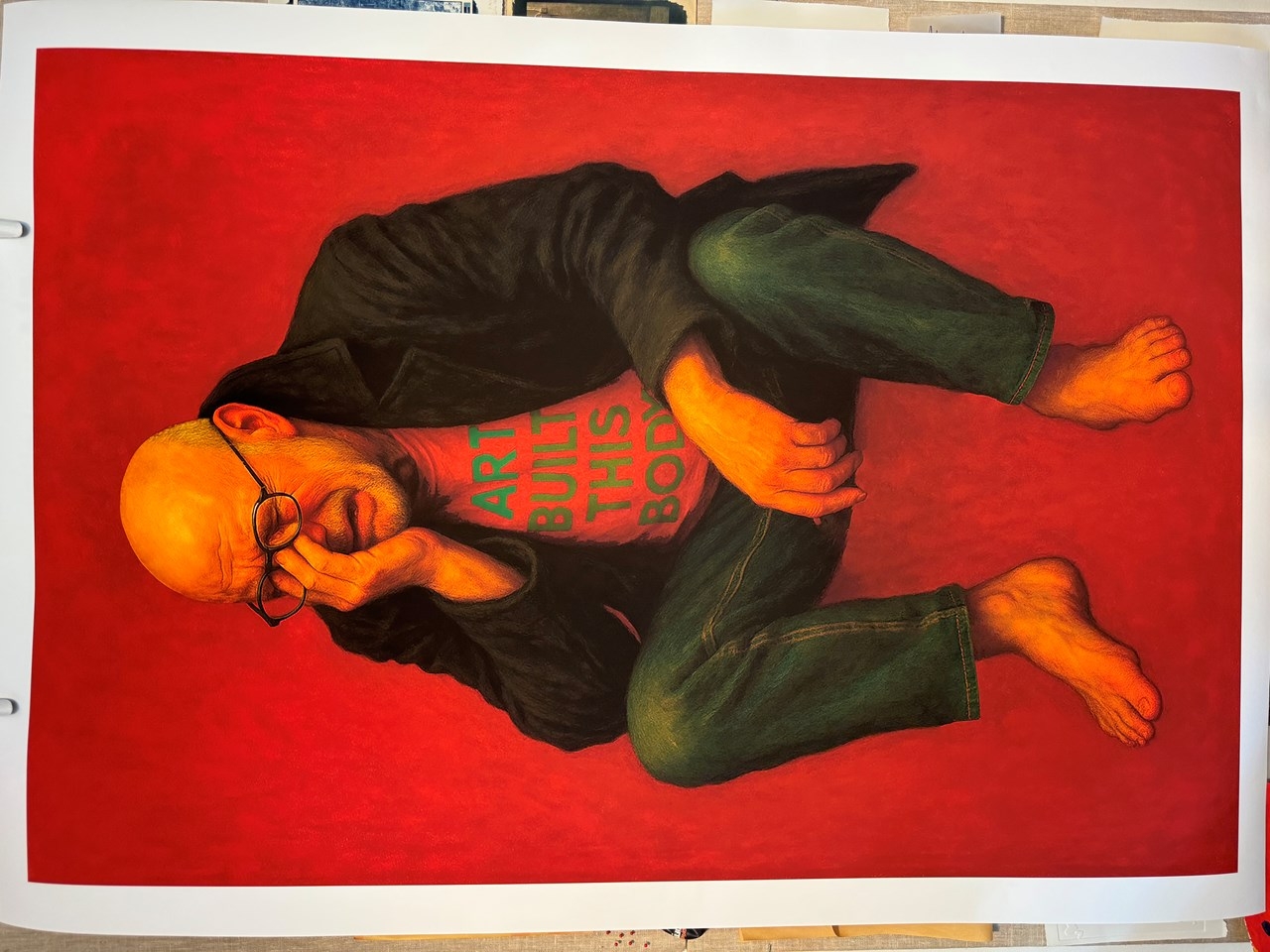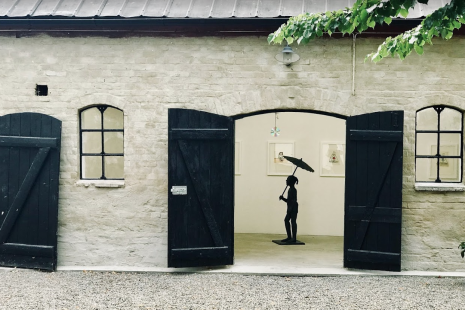What kind of words were they – were they long or short, were they well or badly written?
Think about it now – before we shoo you away,
you barefoot child of life.
One can assume that the barefoot child is the artist himself (it is Wolgers who sits on the invisible stairs in the exhibition’s only picture) and that the dealer is his gallery owner. But nevertheless, both Ferlin’s poem and Wolgers’ burning exhibition theme allude to man’s, to all men’s, inextinguishable desire for security, to be accepted, to be loved, with or without his word and his piece of paper.
When, almost, the whole world is brought to disarray and disintegration by traders who gamble in life and death, by traders in faith and unbelief, then the abandoned, weeping person on the merchant’s steps is forced to try to remember the lost word – what kind of word was it, was it well or badly written…? Think about it now – before you are swept away. Outside the closed frame of the single picture, the leaden, gilded, lost piece of paper swirls, multiplied into multitudes.
Contradictory and paradoxical, but such is life, and artistry – heavy, light, leaden, gilded… poor and abundant. But already in the gallery’s reception, the visitor has encountered a dozen or so paradoxical tableaux (all images are produced through simple prompts to an AI robot) which in a surprising and humorous way depict the symbiosis between the Artist and the Art (here Wolgers and the Art), such symbiosis, such mutual dependence by which man is created and which takes on so many changing expressions and forms during life, for better or worse.
Ferlin’s short poem is timeless and universal. Wolgers joins the long line of interpreters who have taken on it for almost a hundred years.





